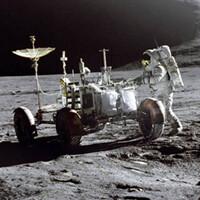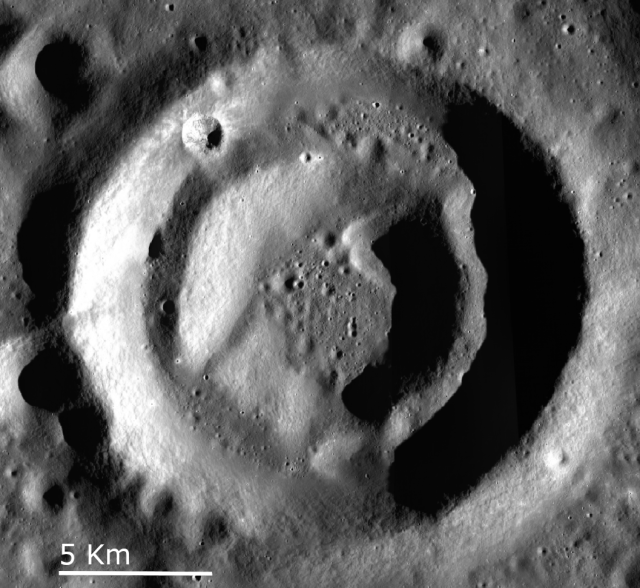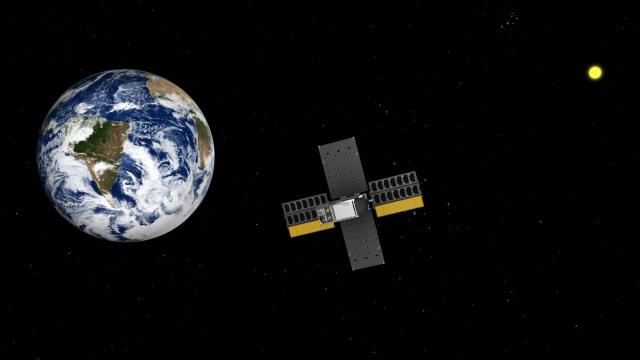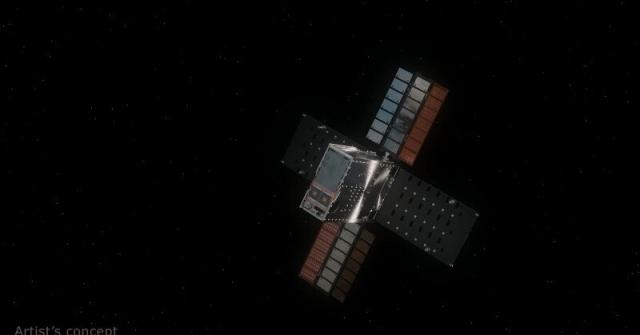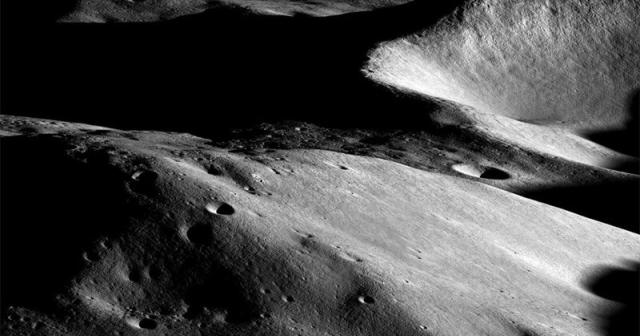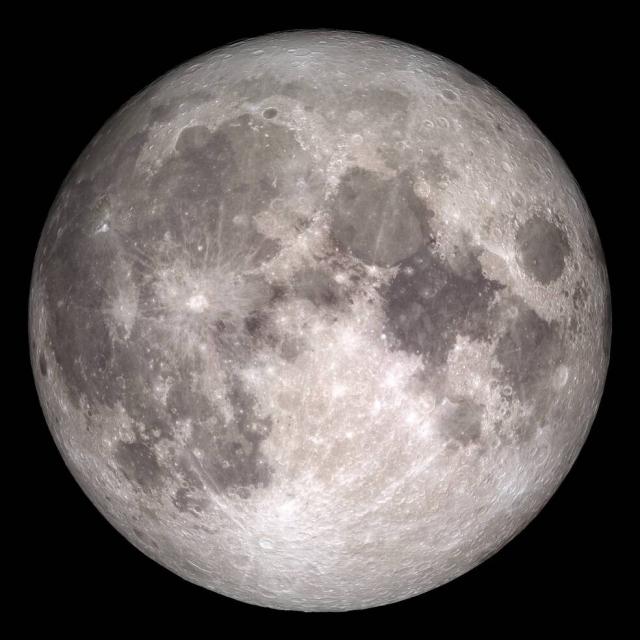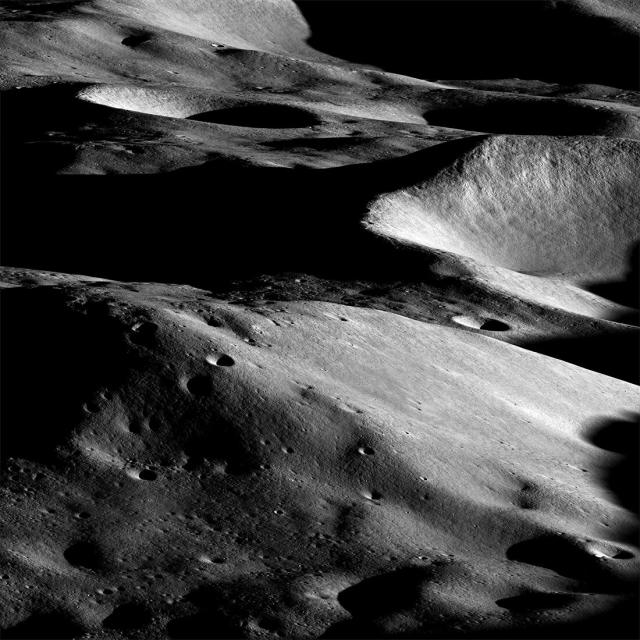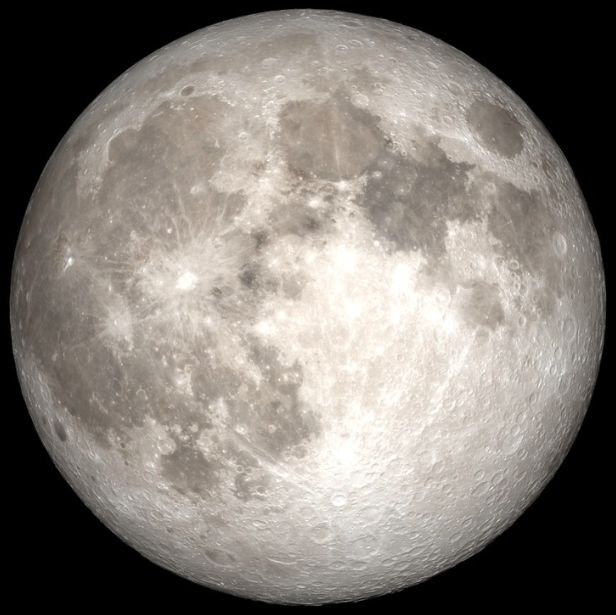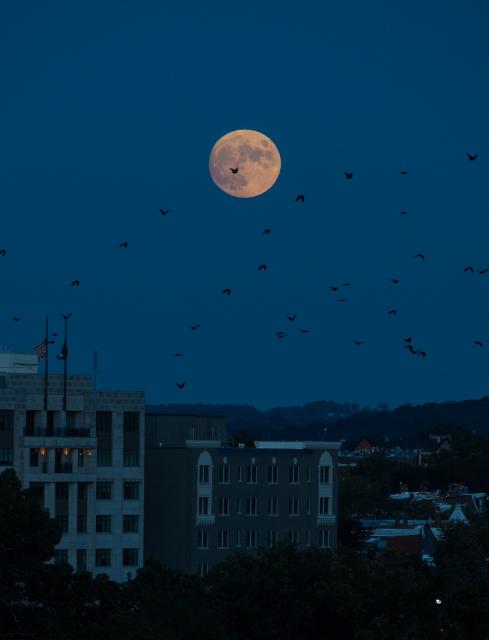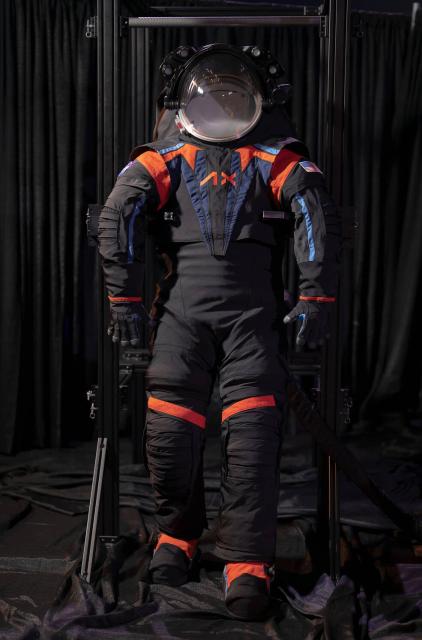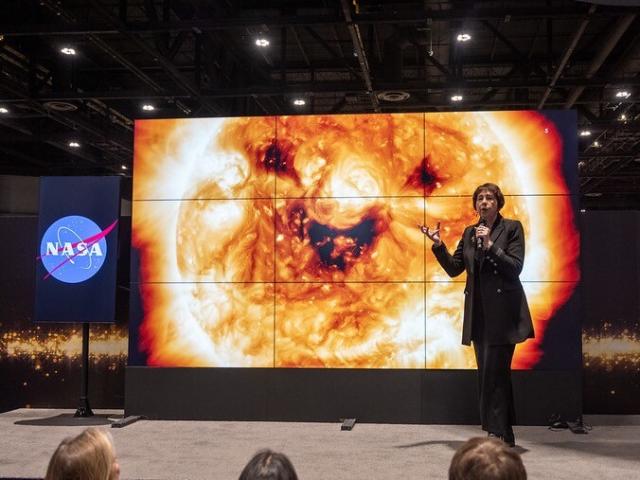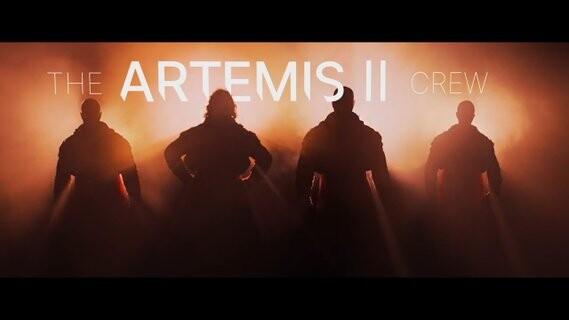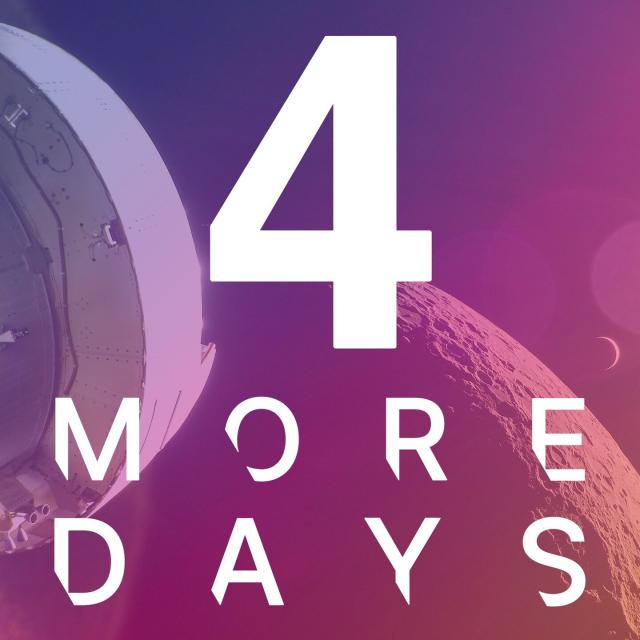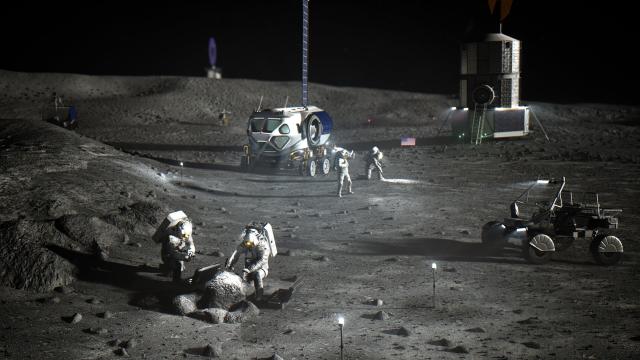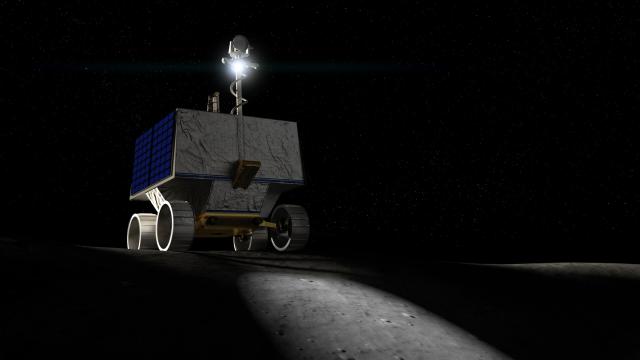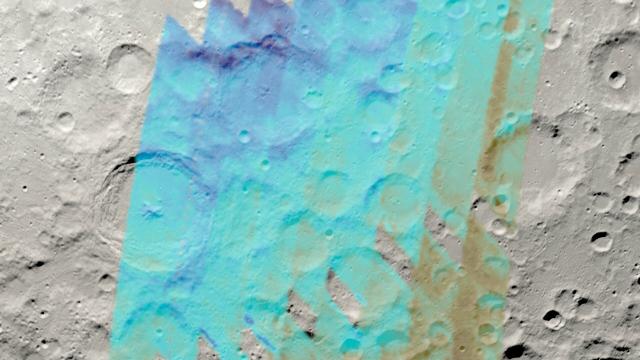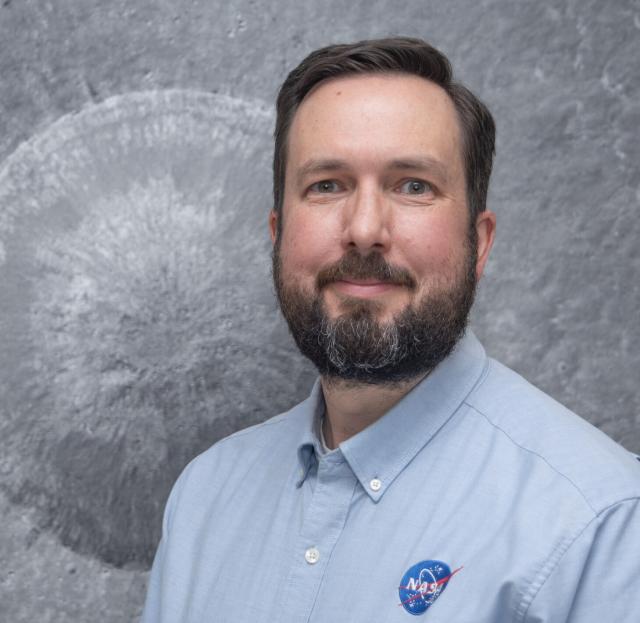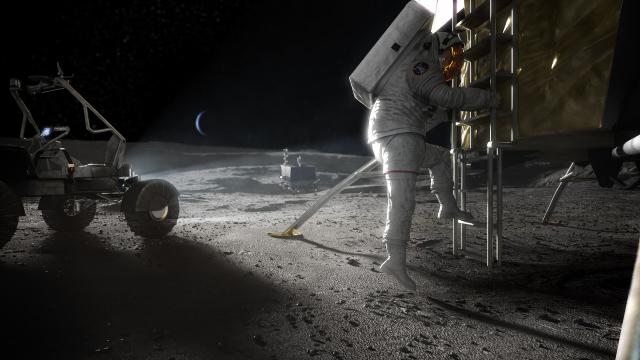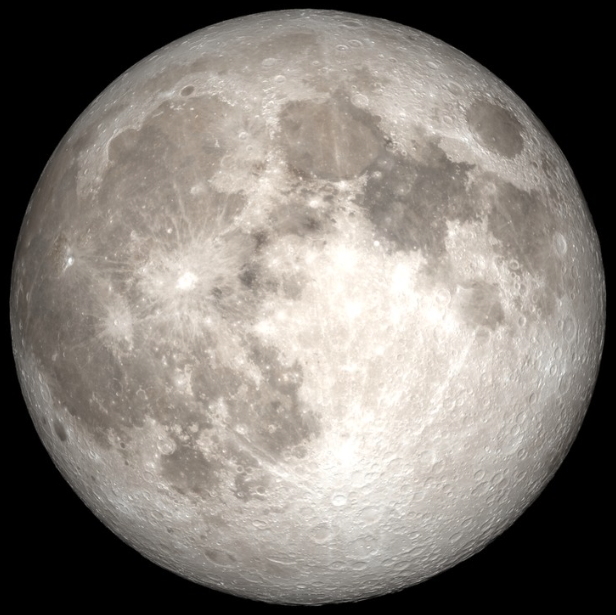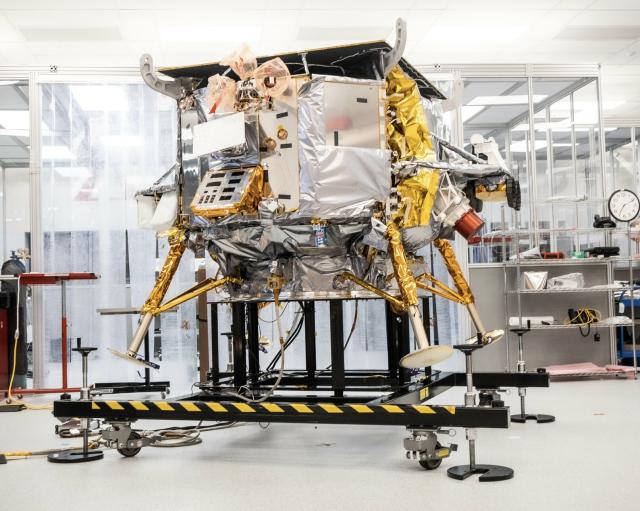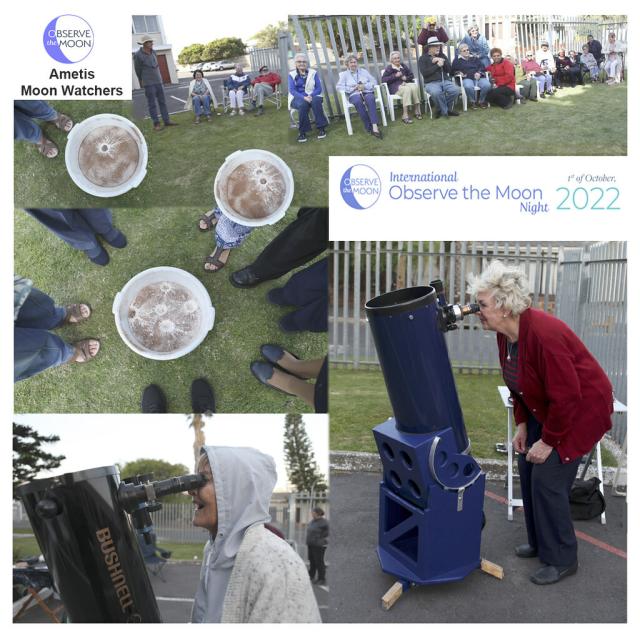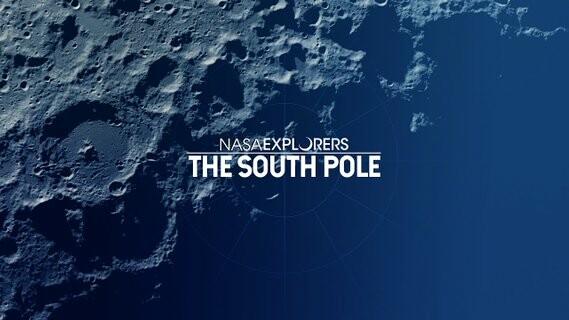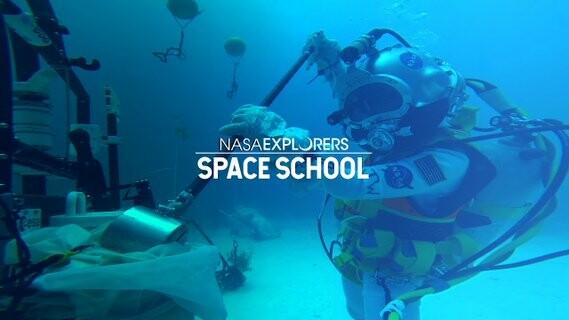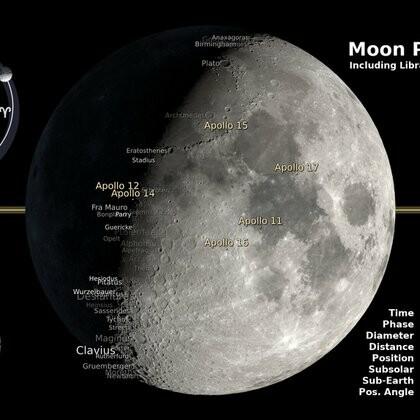Search
Items tagged with: nasamoon
Magnificent Moon with Maria, Mountains, and Massifs Meanders Monthly
More: moon.nasa.gov
#NASAMoon
Home – Moon: NASA Science
Moon.nasa.gov is NASA's deep dive resource for lunar exploration from astronauts to robots.Moon: NASA Science
#NASAMoon
🌓Did you know that a first-quarter moon is an ideal phase to observe? It’s high in the sky in the early evening and shadows along the line between night and day enhance the topography.
Check out our new Daily Moon Guide for more observing tips! go.nasa.gov/MoonGuide
#NASAMoon
Daily Moon Guide | Observe – Moon: NASA Science
NASA's interactive map for observing the Moon each day of the year.Moon: NASA Science
Happy anniversary LRO!
Our Lunar Reconnaissance Orbiter has been exploring the Moon for 14 years now. As the longest-lived lunar spacecraft, it's paving the way for @NASAArtemis
This full view of the far side was made from over 15,000 LRO images. nasa.gov/mission_pages/LRO/new…
#NASAMoon
NASA - The Far Side of the Moon -- And All the Way Around
A new topographic map of the moon will be released later this year, but a sneak-peek is available now!www.nasa.gov
#NASAMoon
🧀 No, it’s not made of cheese, but there are many great things to digest about our Moon. It contains layers, with heavy materials like iron at its core and a surface covered in dust and rocks.
Here's a taste of what the Moon is made of: moon.nasa.gov/inside-and-out/c…
#NASAMoon
What is the Moon made of?
The Moon is a differentiated (or layered) world with a core, mantle, and crust.Moon: NASA Science
Glazed, powdered...or filled with lava? It's likely that volcanic activity played a role in forming these donut-shaped craters. The craters are unusual in shape but are fairly widespread on the pockmarked lunar surface.
#NationalDonutDay
lroc.sese.asu.edu/posts/1151
#NASAMoon
A Lunar Donut: Bell E Crater
Bell E Crater (22.06° N , 264.06° E; ~16 km diameter) controlled feature mosaic made from images M1139534784L/R & M1139527672L/R [NASA/GSFC/Arizona State University].lroc.sese.asu.edu
#NASAMoon
Say farewell to Lunar Flashlight! Now that its mission has ended, the CubeSat makes a close approach with Earth on May 17 at 4:44 UTC. How to see it:
1) With NASA's Eyes on the Solar System interactive
2) Through a telescope from the Southern Hemisphere
NASA’s Lunar Flashlight to Fly by Earth
With its primary mission over, the CubeSat will zoom by Earth late Tuesday, May 16, and NASA’s Eyes on the Solar System app will track it, providing a chance to say farewell.NASA Jet Propulsion Laboratory (JPL)
NASA’s Lunar Flashlight mission has ended after being unable to reach its science orbit around the Moon. But the technology demonstration tested several key technologies that had never been used in space before that will benefit future spacecraft.
jpl.nasa.gov/news/nasa-calls-e…
#NASAMoon
NASA Calls End to Lunar Flashlight After Some Tech Successes
While the CubeSat couldn’t reach the lunar South Pole to help seek ice, it fulfilled several technology goals that will empower future missions for the benefit of humanity.NASA Jet Propulsion Laboratory (JPL)
NASA has selected five new research teams that will work to better understand the lunar environment to prepare for further human and robotic exploration of our Moon.
Congratulations to the new teams!
nasa.gov/feature/nasa-selects-…
#NASAMoon
NASA Selects Five Teams to Study Lunar Science and Sample Analysis
NASA has selected five new research teams to collaborate on lunar science and lunar sample analysis research to support future exploration of the Moon as part of the agency’s Solar System Exploration Research Virtual Institute (SSERVI).Tricia Talbert (NASA)
Full moon rising 🌕
The May full moon goes by many names, including Milk, Corn, Hare, or Flower. No matter what you call it, it's a sight to behold.
The Next Full Moon is the Flower, Corn, or Corn Planting Moon
The next full Moon will be on Friday afternoon, May 5, 2023. The Moon will appear full from early Thursday morning through early Sunday morning.NASA Solar System Exploration
#NASAMoon
Eclipses | Moon in Motion – Moon: NASA Science
There are two types of eclipses: lunar and solar. During a lunar eclipse, Earth’s shadow obscures the Moon. During a solar eclipse, the Moon blocks the Sun from view.Moon: NASA Science
Meet Malapert massif, one of 13 candidate landing regions for #Artemis III, the planned mission to land humans on the Moon. The mountain's peak, on the lower left of the image, rises more than 16,400 ft (5000 meters) above its base
Just imagine the view
Tonight is the first full moon of spring in the northern hemisphere! Pink flowers coming into bloom lend their name to this full moon.
Full moons occur when the Moon is opposite the Sun in its orbit around Earth and its nearside is fully illuminated.
moon.nasa.gov/moon-in-motion/m…
#NASAMoon
Moon Phases | Moon in Motion – Moon: NASA Science
Everything you want to know about why our Moon's appearance changes throughout the month.Moon: NASA Science
solarsystem.nasa.gov/news/2348…
#NASAMoon
April 2023: The Next Full Moon is the Pink, Sprouting Grass, Egg, or Fish Moon – NASA Solar System Exploration
The next full Moon will be on Thursday morning, April 6. It will appear full from Tuesday evening to Friday morning.NASA Solar System Exploration
A spacesuit is not just a fashion statement. It's a personal mobility system to keep astronauts safe as they explore the lunar surface.
This week on NASA’s Curious Universe podcast, we hear about the development of the next generation of spacesuits.
🎧 nasa.gov/curiousuniverse
#NASAMoon
NASA's Curious Universe
NASA.gov brings you the latest images, videos and news from America's space agency. Get the latest updates on NASA missions, watch NASA TV live, and learn about our quest to reveal the unknown and benefit all humankind.NASA
#NASAMoon
Artemis II: Meet the Astronauts Who will Fly Around the Moon (Official NASA Video)
Four astronauts have been selected for NASA’s Artemis II mission: Commander Reid Wiseman, pilot Victor Glover, and mission specialist Christina Koch from NAS...YouTube
Just 4 more days until we meet the #Artemis II astronauts who will fly around the Moon! They'll be the first humans to see the Moon's cratered landscape up close in over 50 years.
Mark your calendar: youtube.com/watch?v=mua1Lysc_J…
#NASAMoon
Who Will Fly Around the Moon? Introducing the Artemis II Astronauts LIVE (Official NASA Broadcast)
Meet the four astronauts who will take a trip around the Moon aboard the Orion spacecraft on their approximately 10-day Artemis II mission, the first crewed ...YouTube
Take a virtual trip to @NASAGoddard today! Catch a live panel of scientists who are training astronauts, helping select #Artemis landing sites and more, in preparation for conducting science at the Moon’s South Pole.
📅 March 23 from 1-2PM ET
📺 Watch: video.ibm.com/channel/nasa-gsf…
#NASAMoon
NASA Goddard Space Flight Center
NASA Goddard Space Flight Center is home to the nation's largest organization of combined scientists, engineers, and technologists that build spacecraft, instruments, and new technology to study the Earth, the sun, our solar system, and the universe.IBM Watson Media
nasa.gov/viper
#NASAMoon
#NASAMoon
Water on the Moon | Inside & Out – Moon: NASA Science
A brief history of the discoveries leading up to the confirmation of water on the Moon in 2020.Moon: NASA Science
#NASAMoon
Study Reveals Map of Moon’s Water Near Its South Pole
A new study using the now-retired Stratospheric Observatory for Infrared Astronomy (SOFIA) has pieced together the first detailed, wide-area map of water distribution on the Moon.Abigail Tabor (NASA)
Meet Dr. Noah Petro — the Artemis III project scientist
No stranger to exploring the Moon, Dr. Petro is the project scientist for our Lunar Reconnaissance Orbiter, which has been orbiting the Moon since 2009. nasa.gov/lro
#NASAMoon
Meet Dr. Barbara Cohen — the Artemis IV project scientist
Dr. Cohen is the principal investigator of NASA’s Lunar Flashlight mission as well as an instrument aboard the Peregrine Mission 1 with @nasa’s Commercial Lunar Payload Services program. nasa.gov/clps
#NASAMoon
Commercial Lunar Payload Services
As the first major step to return astronauts to the Moon under Space Policy Directive-1, NASA is working with nine American companies on delivery services to the lunar surface through Commercial Lunar Payload Services (CLPS) contracts.NASA
The #Artemis dream team just added two new members!
Congratulations to @NASAGoddard's Dr. Noah Petro and Dr. Barbara Cohen for being appointed to coordinate lunar science for the first and second crewed lunar landing missions in more than 50 years.
nasa.gov/feature/nasa-appoints…
#NASAMoon
NASA Appoints Lunar Science Leads for Artemis III, Artemis IV Missions
NASA has appointed two scientists to coordinate the lunar science teams supporting the first and second crewed lunar landing missions in more than 50 years.Tricia Talbert (NASA)
It's the last full moon of winter in the northern hemisphere! This full moon corresponds with several religious practices and festivals, including Lent, Purim, Holi, and Medin Poya.
Learn more about Moon phases: moon.nasa.gov/moon-in-motion/m…
#NASAMoon
Moon Phases | Moon in Motion – Moon: NASA Science
Everything you want to know about why our Moon's appearance changes throughout the month.Moon: NASA Science
#NASAMoon
Love you to the Moon and back!
On Valentine's Day 2023, 19:00 GMT, this is 464421.5 miles
The Moon is roughly 30 times the diameter of Earth away, but because its orbit isn't perfectly circular, its distance varies from about 28-32 Earth diameters throughout a month.
#NASAMoon
#NASAMoon
NASA's Curious Universe
NASA.gov brings you the latest images, videos and news from America's space agency. Get the latest updates on NASA missions, watch NASA TV live, and learn about our quest to reveal the unknown and benefit all humankind.NASA
#NASAMoon
Leaders in Lidar | Chapter 3: Take the Next Steps
Riding on the success of MOLA, the Goddard team develops new lidar instruments for Earth, the Moon and Mercury. Each new instrument is a major leap forward i...YouTube
Happy Lunar New Year to all who celebrate!
Today's new moon marks the beginning of the lunar calendar year in many Asian cultures. Learn all about Moon phases here: go.nasa.gov/3ZHx2rT
#NASAMoon
Moon Phases | Moon in Motion – Moon: NASA Science
Everything you want to know about why our Moon's appearance changes throughout the month.Moon: NASA Science
#NASAMoon
Lunar Gateway Instruments to Improve Weather Forecasting for Artemis
For Artemis astronauts traveling on missions to the Moon, two space weather instrument suites, HERMES and ERSA, will provide an early forecast.Miles Hatfield (NASA)
This #MoonCrushMonday, we're reminiscing about International #ObserveTheMoon Night. We had record-breaking participation in 2022, with 4282 registrations from 125 different countries. See how people around the world celebrated: go.nasa.gov/3Iw7iZj.
Photo credit: Carol Botha
#NASAMoon
International Observe the Moon Night 2022 Recap – Moon: NASA Science
Here's how our community observed the Moon in 2022.Moon: NASA Science
Every adventurer needs a map. Meet the #NASAExplorers who have been remotely studying our Moon for decades, helping identify key areas for exploration and future landing sites for @NASAArtemis missions.
NASA Explorers Season 5, Episode 4: The South Pole
When Artemis astronauts land on the Moon, they’ll travel to sites never before visited by humans. Namely, they'll explore the South Pole region, home to the ...YouTube
Sharpen your pencils; it’s time for space school!
Before @NASA_Astronauts land on the Moon, they learn from researchers on Earth about how to operate in lower gravity and collect lunar samples. Join #NASAExplorers in class!
NASA Explorers Season 5, Episode 3: Space School
Before Jessica Watkins was an astronaut, she was a geologist. Now working on the International Space Station, Jessica and her fellow astronauts are preparing...YouTube
Meet some #NASAExplorers who really rock!
These researchers at @NASAGoddard study Moon rocks brought back by Apollo astronauts to learn more about our solar system and our own origins in it. They’re prepping to do the same with rocks from @NASAArtemis.
NASA Explorers Season 5, Episode 2: Moon Rocks
Meet NASA’s rock detectives. Using tiny samples of lunar rock brought back by Apollo astronauts, these NASA Explorers are looking into the origins of our Moo...YouTube
What will the Moon look like on your (or your pet's) next birthday, your anniversary, or on another special day?
Check out the Moon phase for each day in 2023, courtesy of our Lunar Reconnaissance Orbiter and Scientific Visualization Studio:
